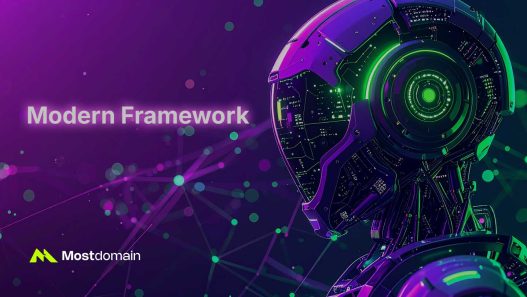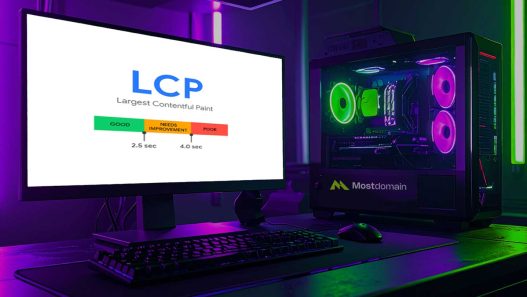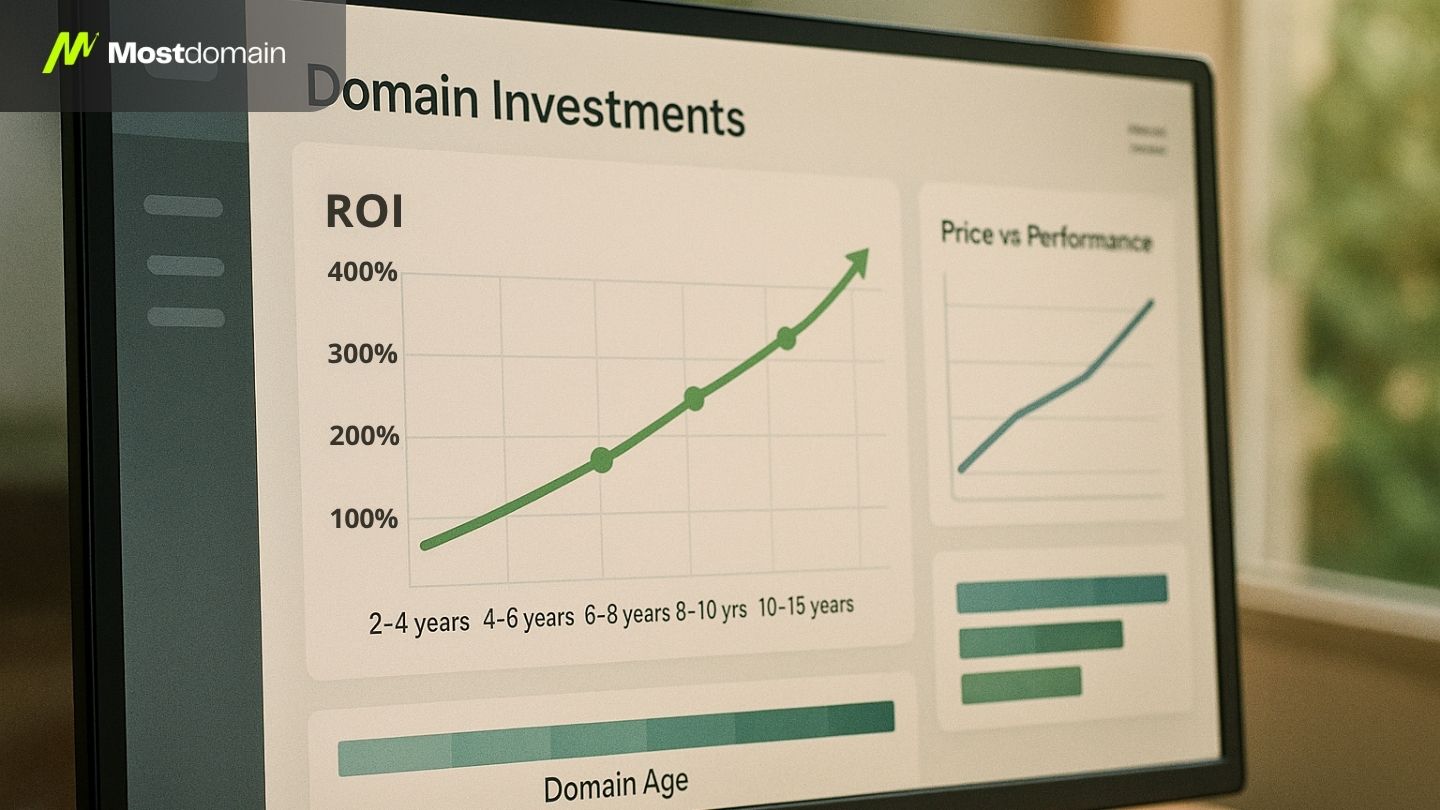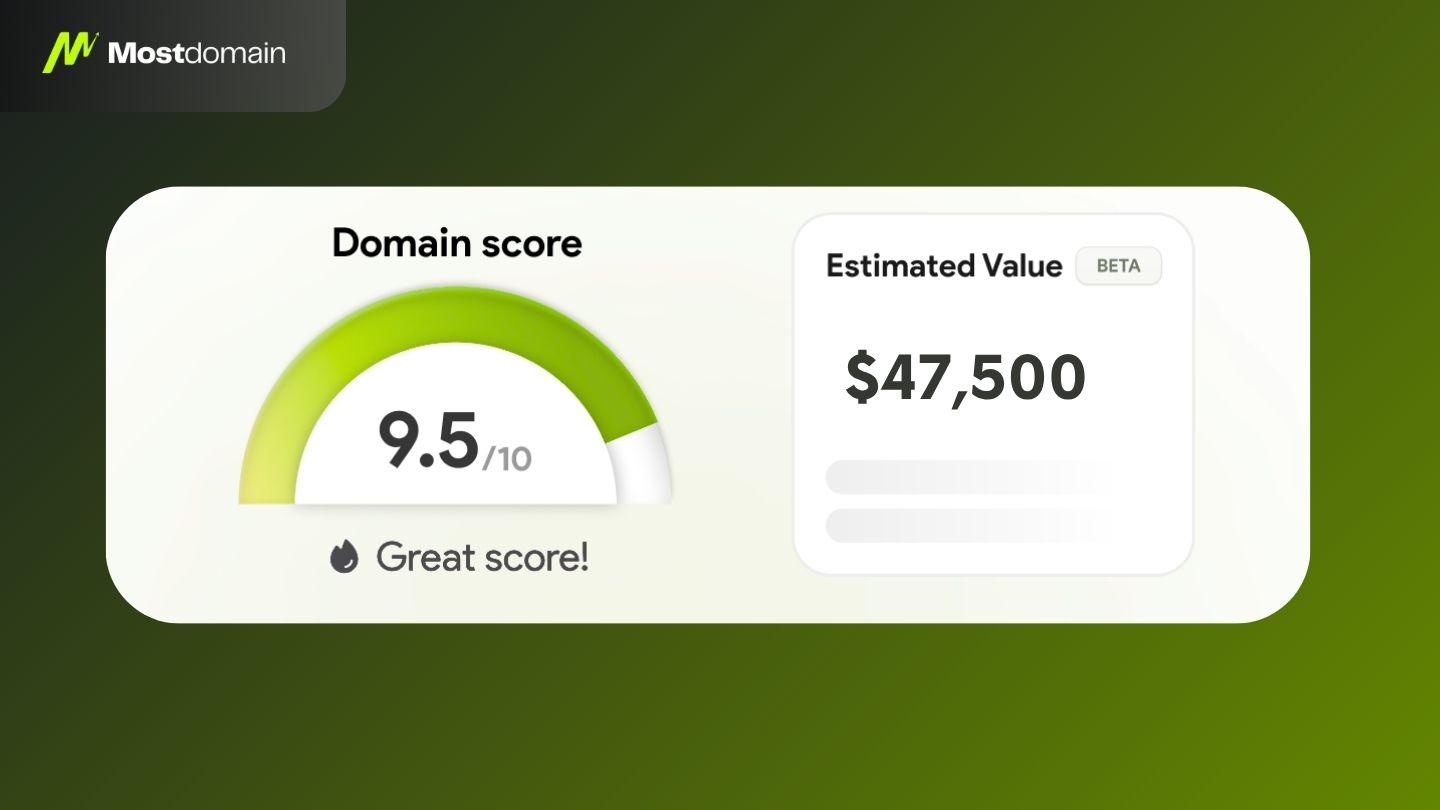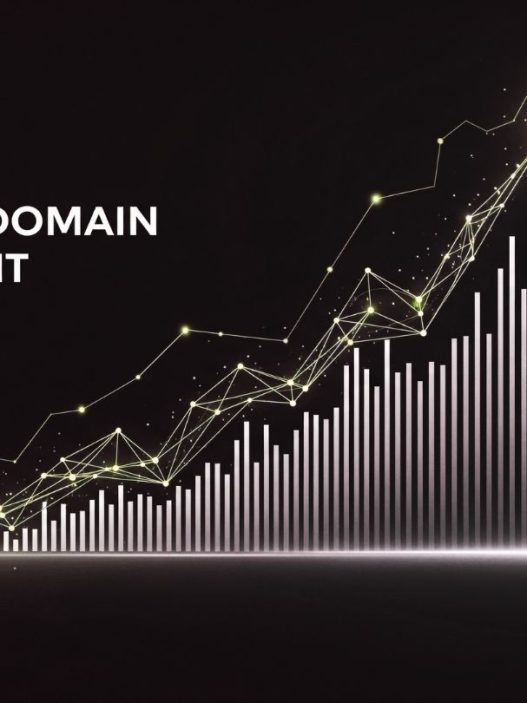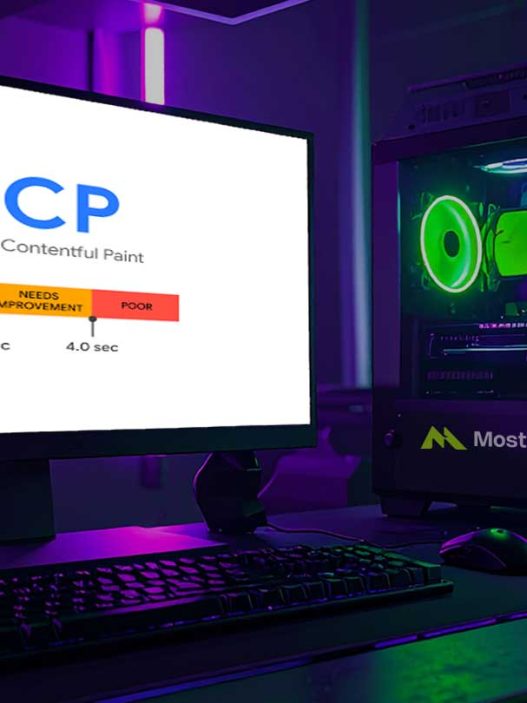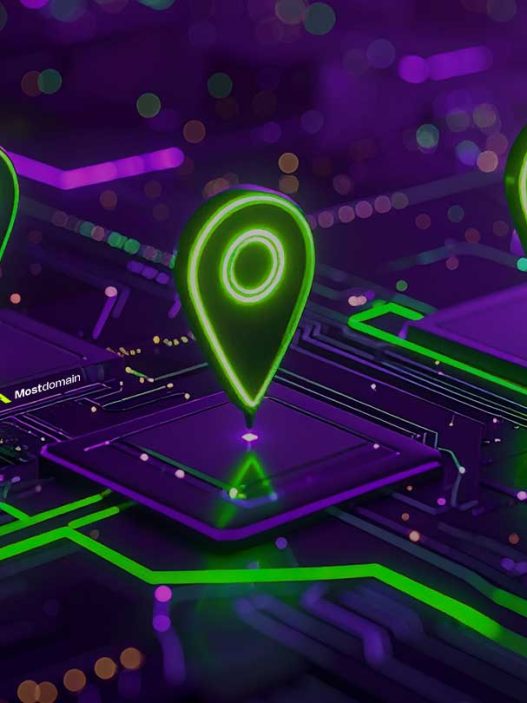“The aged domain market generates over $1.8 billion annually, with smart investors achieving 200-400% ROI within 12 months. Yet 60% of buyers make critical mistakes that kill their SEO potential. This comprehensive guide reveals insider strategies for profitable aged domain acquisition.”
Why Are Aged Domains So Valuable for SEO?
Aged domains represent digital real estate that has matured over time, accumulating trust signals, authority metrics, and search engine recognition that new domains simply cannot replicate. When executed correctly, aged domain acquisition can provide immediate SEO advantages worth thousands of dollars in saved time and marketing costs.
The strategic value of aged domains extends far beyond simple age metrics. These digital assets carry established backlink profiles, historical content associations, and brand recognition that can accelerate your SEO timeline by 6-18 months compared to starting with a fresh domain.
What Kind of ROI Can You Actually Expect from Aged Domain Investments?
Understanding the financial mechanics of aged domain investment helps clarify why smart marketers allocate significant budgets to domain acquisition:
| Domain Age Category | Average Investment | Expected ROI Timeline | Success Rate |
| 2-5 years | $200-$2,000 | 6-12 months | 45% |
| 5-10 years | $1,000-$10,000 | 3-8 months | 65% |
| 10-15 years | $5,000-$50,000 | 1-6 months | 80% |
| 15+ years | $10,000-$200,000+ | 1-3 months | 90% |
These numbers reflect successful implementations where buyers conducted proper due diligence and executed strategic development plans. Failed investments typically result from inadequate research or poor post-acquisition strategy.
Primary Value Drivers in Aged Domains
Established Link Equity: The most tangible benefit of aged domains lies in their accumulated backlink portfolios. Quality aged domains often possess hundreds or thousands of referring domains that would cost tens of thousands of dollars to replicate through traditional link building campaigns.
Search Engine Trust: Search algorithms favor domains with consistent operational history. Aged domains that maintained quality content and clean link profiles over years have established trust relationships with search engines that provide ranking advantages.
Brand Recognition Assets: Many aged domains carry residual brand recognition, social media followings, or industry associations that provide marketing leverage beyond pure SEO benefits.
Investment Insight: A well-chosen aged domain with 500+ quality referring domains can provide the equivalent SEO value of a $50,000-$100,000 link building campaign, making domain acquisition one of the highest ROI investments in digital marketing.
Where Should You Buy High-Quality Aged Domains?
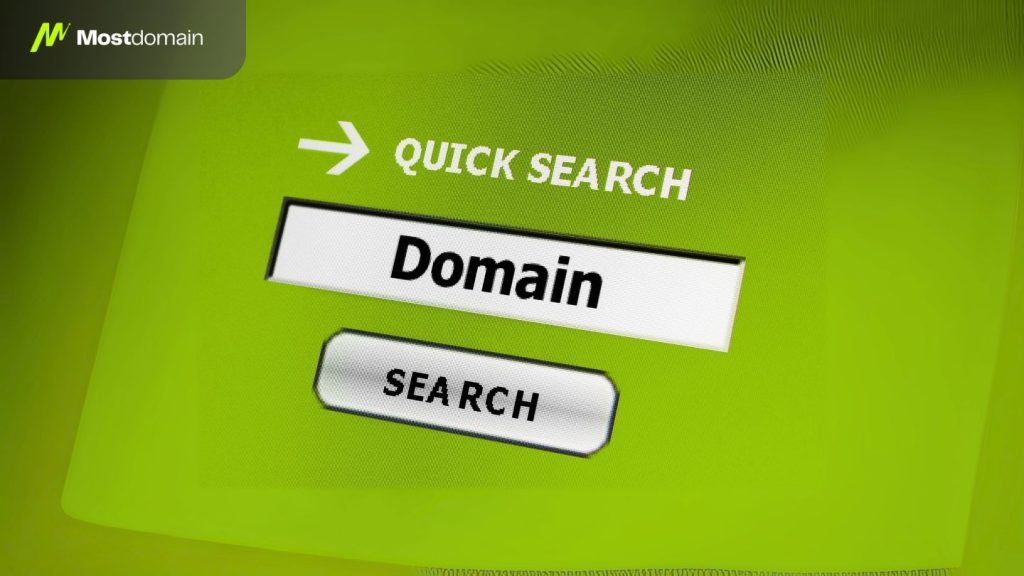
The aged domain marketplace has evolved into a sophisticated ecosystem with specialized platforms catering to different buyer needs and budget levels. Understanding platform strengths helps optimize your acquisition strategy.
Premium Auction Platforms
GoDaddy Auctions dominates the volume market with over 100,000 expiring domains daily. Their advanced filtering system allows searching by domain authority, backlink count, and traffic metrics. The platform’s integration with domain appraisal tools provides valuable buying guidance.
Most Domain specializes in premium expired domains from major registrars. Their pre-release and premium auction categories often feature domains with exceptional commercial value. Membership tiers provide early access to high-value inventory.
Flippa combines domain sales with complete website acquisitions, offering detailed traffic analytics, revenue data, and operational metrics. This platform excels for buyers seeking income-generating digital properties rather than pure SEO plays.
Specialized Aged Domain Marketplaces
ExpiredDomains.net provides the most comprehensive filtering capabilities in the industry. Their database updates every five minutes and includes detailed SEO metrics for each domain. The platform’s advanced search functions help identify undervalued opportunities.
DomCop focuses exclusively on domains with strong SEO potential, offering pre-analyzed metrics including Trust Flow, Citation Flow, and spam risk assessments. Their curated approach saves significant research time for serious buyers.
Sedo operates as a global domain marketplace with both auction and fixed-price options. Their broker services assist with high-value transactions and provide negotiation support for premium domain acquisitions.
Evaluation Criteria by Platform
| Platform | Best For | Price Range | Key Advantage |
| GoDaddy Auctions | Volume buyers, beginners | $50-$5,000 | Largest selection, user-friendly |
| NameJet | Premium domains | $500-$50,000+ | High-quality inventory |
| Flippa | Complete websites | $1,000-$100,000+ | Revenue data included |
| ExpiredDomains.net | SEO professionals | $100-$10,000 | Advanced filtering tools |
| DomCop | Quality-focused buyers | $500-$25,000 | Pre-analyzed SEO metrics |
How to Safely Evaluate Aged Domains
Domain evaluation represents the most critical phase of aged domain acquisition. Comprehensive due diligence prevents costly mistakes and identifies domains with genuine SEO potential.
Historical Content Analysis Framework
Wayback Machine Investigation: Examine the domain’s complete historical content using Archive.org. Look for consistent content themes, quality indicators, and any periods of problematic use. Red flags include adult content, gambling sites, pharmaceutical promotions, or periods of obvious spam.
Content Relevance Assessment: Evaluate how closely historical content aligns with your intended use. Domains with topical relevance to your target industry carry significantly more SEO value than completely unrelated domains.
Ownership Change Indicators: Identify ownership transitions through content changes, design shifts, or topic pivots. Multiple ownership changes may indicate instability or previous monetization issues.
Comprehensive Backlink Profile Audit
Link Quality Evaluation Matrix:
| Link Quality Tier | Characteristics | SEO Value | Risk Level |
| Tier 1 (Premium) | Editorial links from DR 70+ sites | Very High | None |
| Tier 2 (Quality) | Natural links from DR 30-70 sites | High | Low |
| Tier 3 (Average) | Mixed quality links, some commercial | Medium | Medium |
| Tier 4 (Poor) | Low-quality directories, suspicious patterns | Low | High |
| Tier 5 (Toxic) | Clear spam, PBN links, penalties | Negative | Very High |
Advanced Link Analysis Techniques:
- Anchor text distribution: Natural profiles show 60-80% branded/natural anchors
- Link velocity patterns: Gradual, consistent growth over time indicates natural acquisition
- Geographic relevance: Links should align with target market geography
- Topical relevance: Linking sites should relate to domain content themes
Technical Health Assessment
Infrastructure Evaluation Checklist:
- SSL certificate history: Consistent security implementation
- Server response times: Historical performance indicators
- Mobile optimization: Responsive design implementation
- Core Web Vitals: Page speed and user experience metrics
Search Engine Penalty Detection:
- Manual action history in Google Search Console
- Organic traffic patterns during major algorithm updates
- Current search visibility for brand and historical keywords
- Competitor analysis to identify unusual ranking drops
Risk Assessment Framework
High-Risk Indicators (Avoid):
- Multiple ownership changes within 2 years
- Significant traffic drops correlated with algorithm updates
- Backlink profiles dominated by exact-match anchors
- Historical association with penalized networks
- Gaps in content or extended periods of non-operation
Medium-Risk Indicators (Investigate Further):
- Single ownership change with topic shift
- Moderate traffic fluctuations during updates
- Mixed backlink quality with some questionable sources
- Recent technical issues or downtime periods
Low-Risk Indicators (Proceed with Confidence):
- Consistent ownership and content themes
- Stable organic traffic patterns
- Natural backlink acquisition over time
- Clean technical implementation history
Mastering the Domain Acquisition Process
Successful domain acquisition requires strategic planning, competitive intelligence, and disciplined execution. Understanding auction dynamics and negotiation strategies significantly impacts your success rate and investment returns.
Pre-Auction Preparation Strategy
- Market Research and Competitive Analysis: Research comparable domain sales to establish realistic valuation benchmarks. Track auction patterns to identify optimal bidding times and competitive intensity levels. Understanding market dynamics helps avoid overpaying in competitive situations.
- Budget Allocation and Bidding Strategy: Set maximum bid limits based on comprehensive domain valuation, not emotional attachment. Factor in development costs, potential revenue, and alternative investment options. Professional domain investors typically limit individual domain investments to 10-15% of their total acquisition budget.
- Technical Due Diligence Timeline: Complete all domain evaluation tasks before auction participation. Last-minute discoveries can invalidate your investment thesis when it’s too late to withdraw. Serious buyers allocate 2-4 hours for comprehensive domain analysis before committing to significant investments.
Auction Dynamics and Winning Strategies
- Bidding Psychology and Timing: Most auction platforms use soft closing periods that extend bidding time when late bids occur. Experienced buyers often wait until final minutes to avoid driving up prices prematurely. However, ensure adequate time for any technical issues or payment processing delays.
- Competitive Intelligence Gathering: Monitor bidding patterns of frequent participants to understand their valuation methods and maximum budget levels. Some platforms provide bidder history that reveals specialization areas and typical investment ranges.
Direct Purchase and Negotiation Tactics
Fixed-Price Marketplace Strategies: Many premium domains avoid auction formats and list at fixed prices. These often represent better value for serious buyers willing to pay fair market rates without competitive bidding pressure.
Negotiation Frameworks for High-Value Domains: Develop compelling use cases that demonstrate domain value beyond pure speculation. Sellers often prefer buyers with concrete development plans over domain investors seeking quick resales.
Escrow Services and Secure Transfer Protocols: Always use reputable escrow services for transactions over $1,000. Platforms like Escrow.com provide buyer protection and ensure proper domain transfer completion before payment release.
Post-Purchase Integration Planning
Domain Transfer and Technical Setup: Initiate domain transfers immediately after purchase completion. Update DNS settings, implement SSL certificates, and establish hosting infrastructure within 24-48 hours to minimize any SEO disruption.
Content Strategy Development: Plan content restoration and enhancement strategies before domain acquisition. Having clear implementation roadmaps ensures rapid deployment and maximizes SEO benefit realization.
How Much Should You Budget for Profitable Aged Domain Investments?

Effective budget allocation requires balancing risk tolerance, growth objectives, and market opportunities. Professional domain investors typically diversify across multiple price points and risk categories to optimize portfolio performance.
Investment Portfolio Strategies
Conservative Portfolio Approach (Low Risk, Steady Returns):
- 70% allocation to established domains ($500-$2,000 range)
- 20% allocation to emerging opportunities ($200-$500 range)
- 10% allocation to premium speculation ($2,000+ range)
Aggressive Growth Portfolio (Higher Risk, Maximum Returns):
- 40% allocation to premium domains ($2,000-$10,000 range)
- 30% allocation to emerging opportunities ($500-$2,000 range)
- 30% allocation to experimental acquisitions ($100-$500 range)
Cost-Benefit Analysis Framework
Total Cost of Ownership Calculation:
| Cost Category | Percentage of Domain Price | Annual Ongoing Cost |
| Domain Purchase | 100% | N/A |
| Transfer and Setup | 2-5% | $50-$200 |
| Hosting and Maintenance | N/A | $200-$1,000 |
| Content Development | 50-200% | $1,000-$10,000 |
| Link Building and SEO | 100-300% | $2,000-$20,000 |
ROI Calculation Methodology: Expected ROI = (Projected Annual Value – Total Annual Investment) / Total Investment × 100
Professional investors target minimum 200% annual ROI for aged domain investments, with many achieving 300-500% returns through strategic implementation.
Budget Optimization Strategies
Market Timing and Seasonal Patterns: Domain auction activity follows predictable patterns with lower competition during summer months and holiday periods. Strategic buyers often achieve 20-30% cost savings by timing purchases during low-activity periods.
Volume Discount Opportunities: Many platforms offer reduced fees or preferential treatment for high-volume buyers. Building relationships with domain brokers can provide access to off-market opportunities and preferred pricing.
Alternative Financing Options: Some specialized lenders offer domain acquisition financing for qualified buyers. Revenue-based financing allows leveraging domain cash flow to fund additional acquisitions.
Risk Mitigation Through Diversification
Geographic Diversification: Acquire domains across different geographic markets to reduce exposure to regional economic fluctuations or regulatory changes.
Industry Diversification: Spread investments across multiple industries to minimize impact from sector-specific algorithm updates or market shifts.
Risk Level Diversification: Balance high-potential, high-risk domains with stable, lower-risk investments to optimize portfolio performance.
Advanced Implementation Strategies
Maximizing aged domain value requires sophisticated implementation strategies that preserve existing SEO equity while building additional authority and traffic.
Content Archaeology and Restoration
- Historical Content Mapping: Identify the most valuable historical content using tools like Ahrefs Content Explorer to analyze traffic patterns and backlink acquisition. Prioritize content restoration based on traffic potential and link equity preservation.
- Content Gap Analysis: Compare historical content themes with current market opportunities to identify content expansion possibilities. Many aged domains have established topical authority that can be leveraged for related keywords and topics.
- Link Equity Preservation: Maintain URL structures wherever possible to preserve existing link equity. Implement strategic 301 redirects for content consolidation while avoiding excessive redirect chains that dilute authority.
Technical SEO Optimization
Infrastructure Modernization: Upgrade hosting infrastructure to ensure optimal performance while maintaining historical SEO signals. Implement modern security protocols and performance optimizations without disrupting established crawl patterns.
Schema Markup Enhancement: Add comprehensive structured data to help search engines understand content context and improve SERP visibility. Focus on schema types that align with the domain’s historical content themes.
Authority Building and Expansion
Strategic Content Development: Develop content that builds upon existing topical authority while expanding into related keyword opportunities. Focus on comprehensive, authoritative content that positions the domain as an industry resource.
Link Building Acceleration: Leverage existing domain authority to accelerate new link acquisition. High-authority aged domains often receive more positive responses to outreach campaigns and collaboration requests.
Measuring Success and Optimizing Performance
Comprehensive performance tracking ensures optimal return on aged domain investments and informs future acquisition strategies.
Key Performance Indicators
SEO Performance Metrics:
- Organic traffic growth month-over-month
- Keyword ranking improvements for target terms
- Backlink acquisition rate and quality
- Domain authority score progression
Business Impact Metrics:
- Lead generation and conversion rates
- Revenue attribution to organic search
- Customer acquisition costs through SEO
- Lifetime value of SEO-acquired customers
Performance Optimization Strategies
Continuous Monitoring and Adjustment: Implement comprehensive analytics tracking to identify optimization opportunities and potential issues. Regular performance reviews help maximize long-term investment returns.
Competitive Intelligence Integration: Monitor competitor strategies and market changes to identify new opportunities and potential threats to domain value.
What Are the Biggest Mistakes People Make When Buying Aged Domains?
Understanding frequent mistakes helps avoid costly errors that destroy aged domain investment value.
Critical Mistakes to Avoid
- Insufficient Due Diligence: Rushing the evaluation process leads to acquiring domains with hidden liabilities. Always complete comprehensive analysis before committing to purchases.
- Overemphasis on Metrics: Focusing solely on authority metrics without considering relevance and implementation requirements often results in poor investments.
- Inadequate Post-Purchase Planning: Failing to plan implementation strategies before purchase leads to delayed deployment and reduced SEO benefits.
Success Factors for Aged Domain Investment
- Comprehensive Research: Invest adequate time in domain evaluation and market analysis before making purchase decisions.
- Strategic Implementation: Develop detailed implementation plans that preserve existing SEO equity while building additional value.
- Long-term Perspective: Aged domain investments often require 6-12 months to achieve full potential. Maintain realistic expectations and long-term focus.
What Does the Future Hold for Aged Domain Investing?

Understanding market trends and future developments helps optimize long-term investment strategies.
Market Evolution Trends
✅ Increased Competition: Growing awareness of aged domain value has increased competition and pricing pressure in premium market segments.
✅ Platform Sophistication: Auction platforms continue developing advanced tools and analytics that improve domain evaluation accuracy and market efficiency.
✅ Regulatory Considerations: Evolving privacy regulations and domain registration requirements may impact future domain transfer and ownership processes.
Strategic Adaptations
Focus on Quality over Quantity: Market maturation requires more selective acquisition strategies focused on domains with exceptional SEO potential.
Integration with Broader SEO Strategies: Aged domains become most valuable when integrated with comprehensive SEO and content marketing strategies rather than standalone investments.
Final Recommendations: Building Your Aged Domain Strategy
Successful aged domain investment requires combining market knowledge, technical expertise, and strategic thinking. Start with smaller investments to develop evaluation skills and market understanding before pursuing high-value opportunities.
For Beginners: Begin with domains in the $200-$1,000 range to learn evaluation techniques and implementation strategies without excessive risk exposure.
For Experienced Marketers: Focus on domains with clear implementation paths and strong relevance to existing business operations or expertise areas.
For Enterprise Organizations: Consider portfolio approaches that diversify across multiple domains and market segments while maintaining consistent quality standards.
Your Next Steps
- Define investment criteria based on budget, risk tolerance, and business objectives
- Establish evaluation processes using tools and frameworks outlined in this guide
- Start with small investments to develop expertise and market understanding
- Build implementation capabilities for rapid domain deployment and optimization
- Track performance metrics to optimize future investment decisions
The aged domain market offers significant opportunities for knowledgeable investors willing to conduct proper research and execute strategic implementation plans. Success requires patience, expertise, and disciplined execution, but the potential returns justify the investment for serious SEO professionals and business owners.
Frequently Asked Questions
1. How do I verify an aged domain’s authenticity and value?
Comprehensive Verification Process: Use multiple tools to cross-reference domain metrics and history. Check Wayback Machine for content consistency, analyze backlink profiles with Ahrefs or SEMrush, and verify current search visibility. Look for gradual metric growth over time rather than sudden spikes that might indicate manipulation.
Red Flag Identification: Avoid domains with inconsistent historical content, suspicious backlink patterns, or significant traffic drops during major algorithm updates. Domains with multiple ownership changes or extended periods of inactivity often carry hidden risks.
2. What’s the minimum budget needed for profitable aged domain investment?
Entry-Level Investment Range: Beginners can start with $500-$1,500 budgets to acquire domains with moderate authority and clear implementation potential. Include additional funds for development, hosting, and content creation to maximize investment returns.
Professional Investment Levels: Serious investors typically allocate $5,000-$25,000 for premium domains with exceptional authority and commercial potential. Enterprise organizations may invest $50,000+ for category-defining domains with massive traffic and authority metrics.
3. How long does it take to see ROI from aged domain investments?
Timeline Expectations: Most successful aged domain investments show initial SEO improvements within 2-4 months and achieve positive ROI within 6-12 months. Factors affecting timeline include domain quality, implementation speed, and competitive intensity in target markets.
Acceleration Strategies: Focus on domains with existing content relevance and clear implementation paths. Rapid content deployment and strategic link building can accelerate results, with some premium domains showing benefits within 30-60 days.
4. Can aged domains guarantee SEO success?
Realistic Expectations: Aged domains provide significant advantages but don’t guarantee success. Results depend on proper evaluation, strategic implementation, ongoing optimization, and market conditions. View aged domains as powerful tools that require skilled execution rather than automatic solutions.
Success Factors: Combine domain acquisition with comprehensive SEO strategies, quality content development, and consistent optimization efforts. The most successful aged domain investments integrate seamlessly with broader marketing and business development strategies.
References
- Google Search Central – Domain Authority and Historical Data Guidelines
- Ahrefs – Comprehensive Study on Aged Domain Performance Metrics
- SEMrush – Market Analysis of Domain Auction Trends and Pricing
- Moz – Domain Authority Factors and Link Equity Research
- Search Engine Land – Best Practices for Domain Acquisition and Implementation






